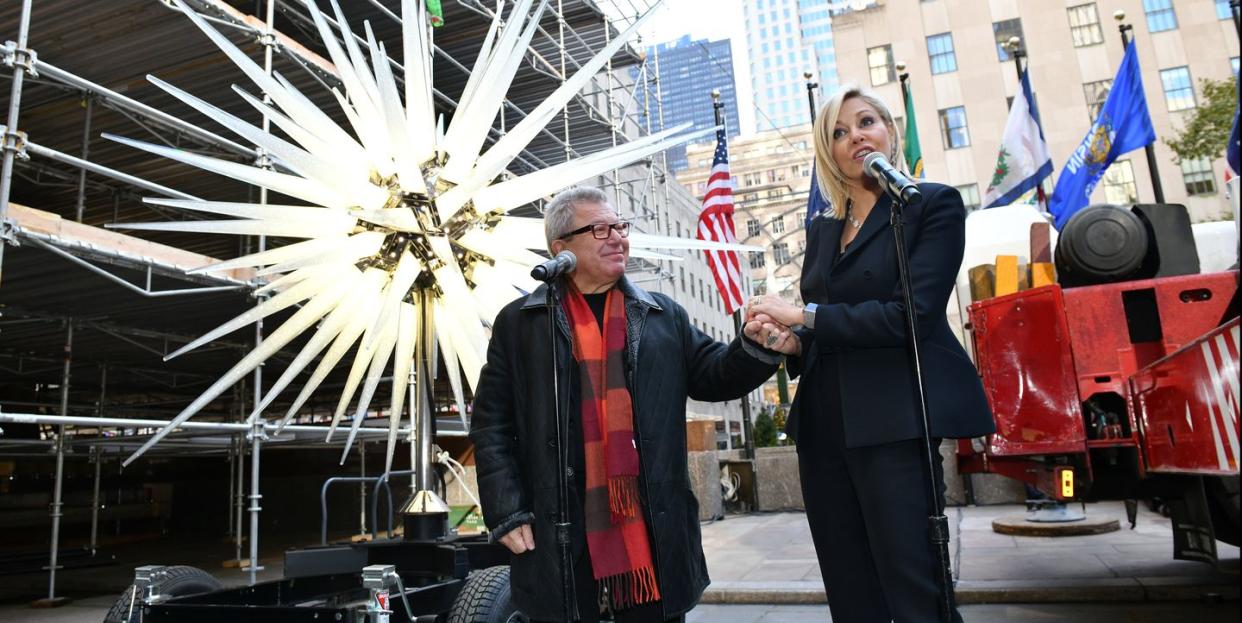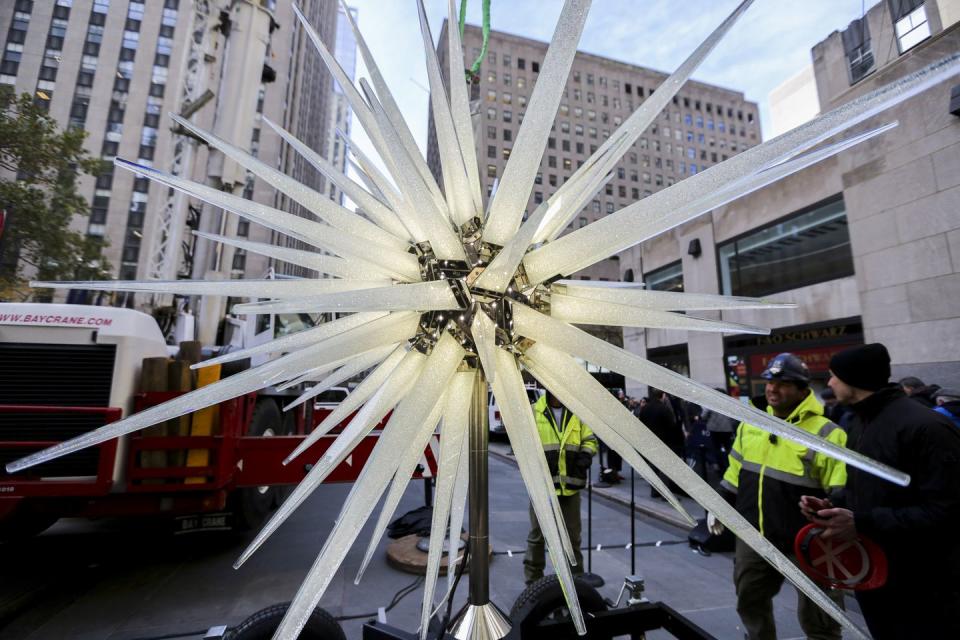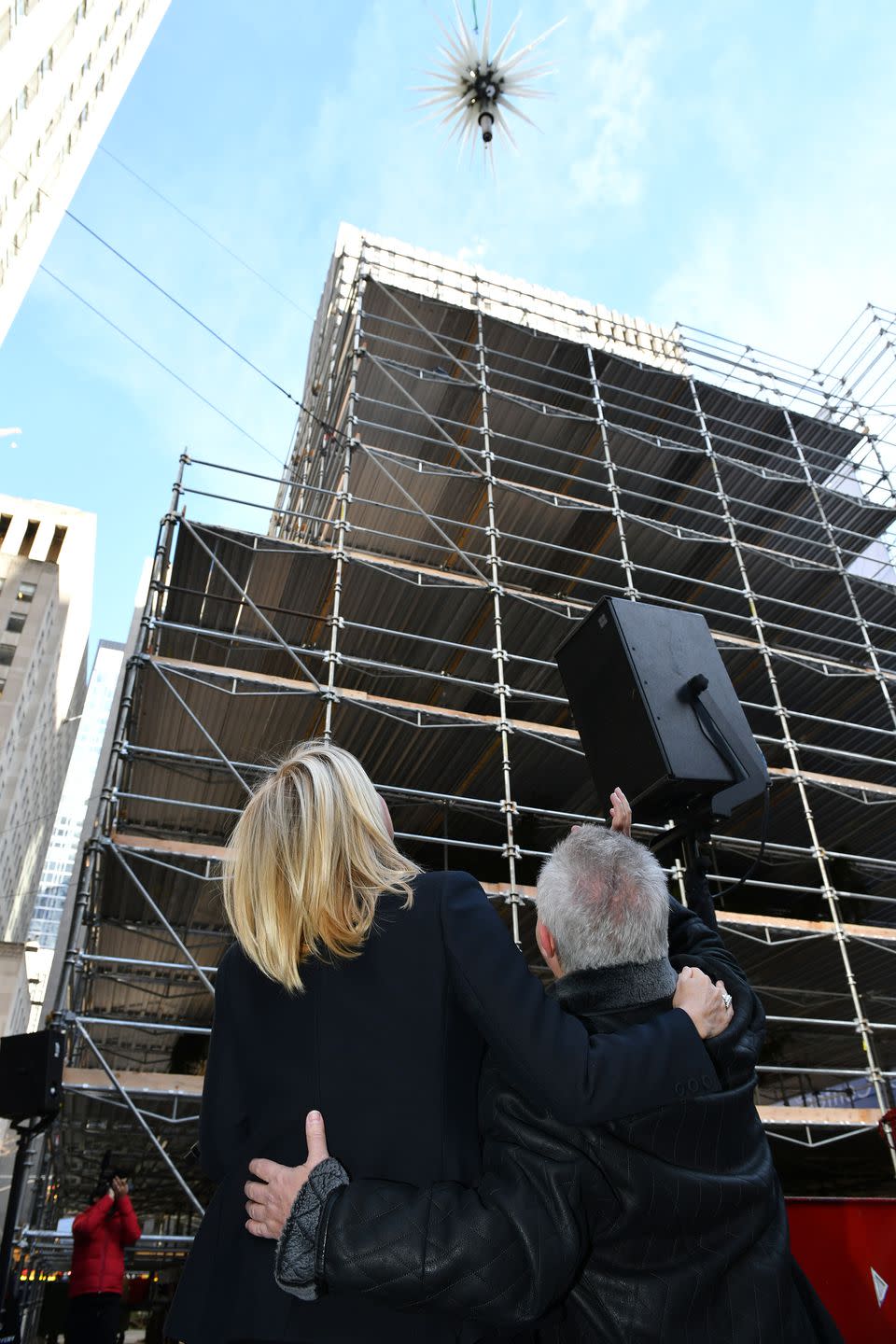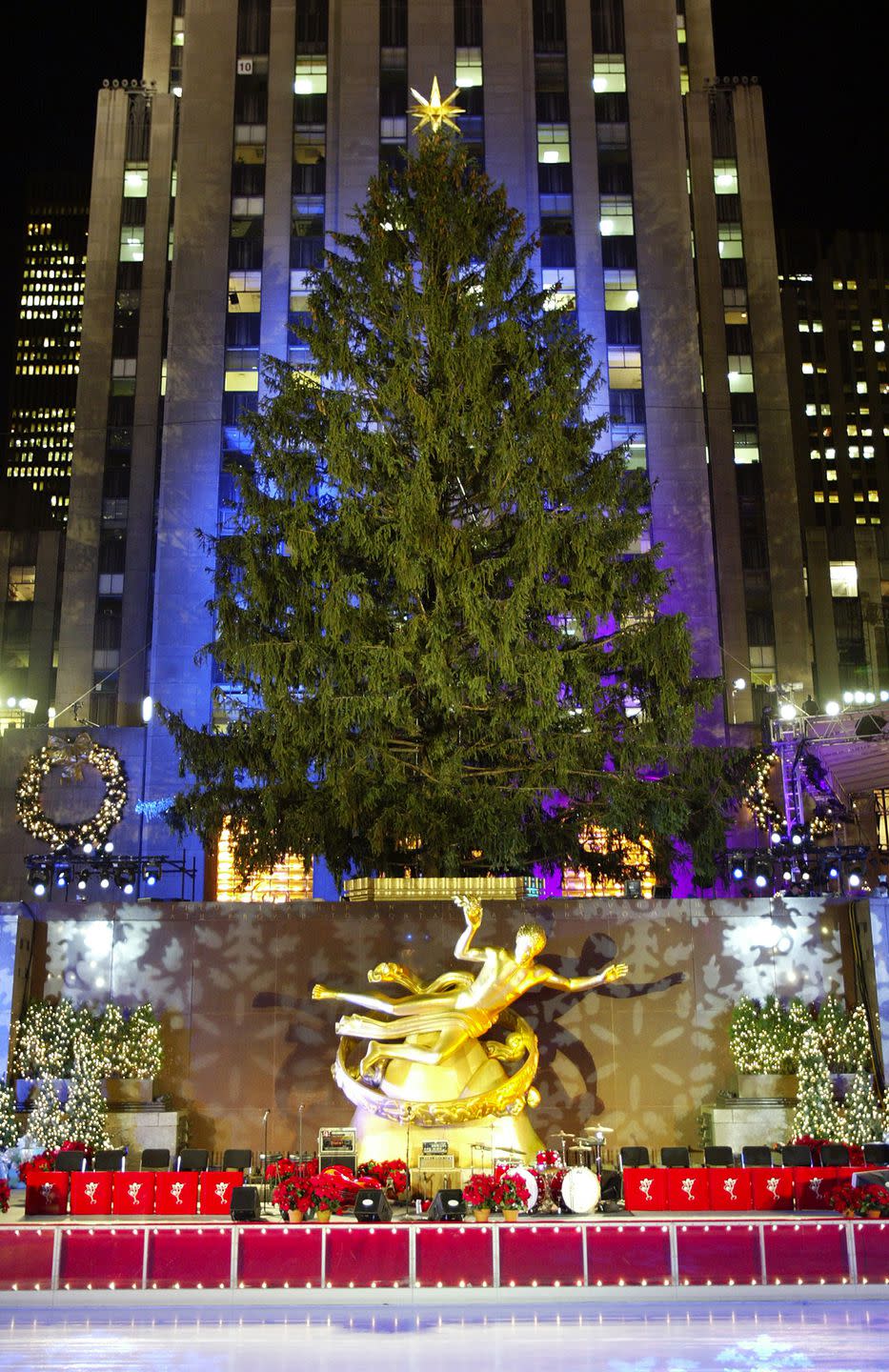How Architect Daniel Libeskind Redesigned the Rockefeller Center Christmas Tree Star

For the first time in 14 years, the Rockefeller Center tree has a new topper. Daniel Libeskind–master planner of One World Trade Center and creative genius behind some of the world’s most praised structures–was enlisted as the first-ever architect to reimagine the star, in collaboration with Swarovski. As a Polish immigrant and son of two Holocaust survivors, the star signifies more than just a dazzling ornament to Libeskind, he says: “I want the star to spread light through the world, to spread the peace and unity I feel as an immigrant to this country.”
Libeskind’s precious gratitude for not only this opportunity, but for the symbol of the star, made him an obvious candidate for Swarovski. “We chose Daniel not only for his architectural expertise, but also because he is a simply kind and genuine person, someone we would enjoy working with for years,” says Nadja Swarovski, a Swarovski board member.

While Libeskind’s portfolio tends to favor projects of (much) larger scale, a significant downsizing was no shortcut to success. “With architecture and design, it doesn’t matter how big something is, it is likely that it will be equally difficult,” Libeskind tells ED. And with a star that required two years to design, we’re inclined to believe him.
The three-dimensional 900-pound star is over nine feet in diameter, with 70 spikes that radiate from the core. It is covered in three million double cone Swarovski crystals, chosen for their clarity and “Aurora Borealis effect.” While the thought of affixing millions of minuscule stones to a colossal structure seems impossibly meticulous, Libeskind’s attitude toward the process was refreshingly existential. “Stars are spiritual, stars are cosmic. They represent the future, the present, the past. Starlight radiates meaning and mystery into the world,” he says, with his signature pureness and ebullience. The infinite dimension and light-refracting properties of the crystals are inherently star-like, which aided in the structure’s overall vibrance. The technology of the structure’s core–made from proprietary LED backlighting and Swarovski’s proprietary active panel technology–paired with the crystals to emit over 100,000 lumens that can be seen from all angles.

While there may not be a rulebook for creating such a sculpture, Libeskind’s geometric and angular style helped inform his blueprints for the project. Inspired by the Renaissance, most notably Leonardo Da Vinci’s perfect forms, Libeskind was able to create a structure that revolved around starlight and materiality. “The star is glistening, it’s bright. It will give people a reason to stop and look up, and when we all do this together we are relating not only to the star, but to one another,” Libeskind explains.

The star will be lit during the Rockefeller Christmas lightening ceremony on November 28.
('You Might Also Like',)

